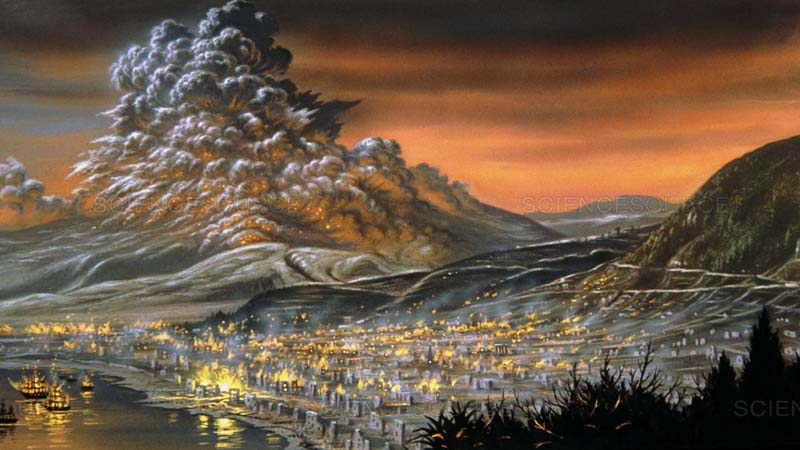Volcanic eruption buries Caribbean city

On this day in 1902, Martinique’s Mount Pele begins the deadliest volcanic eruption of the 20th century. The following day, the city of Saint Pierre, which some called the Paris of the Caribbean, was virtually wiped off the map.
Mount Pele, the name meaning bald in French, was a 4,500-foot mountain on the north side of the Caribbean island of Martinique. On 2 April, 1902, new steam vents were spotted on the peak, which overlooked the port city of Saint Pierre. Three weeks later, tremors were felt on the island and Mount Pele belched up a cloud of ash.
Caught up in the midst of an important election, residents of Saint Pierre failed to heed the mountain’s warnings and evacuate. The nearby residents mistakenly believed that the only danger from the volcano was lava flow and that if lava started to flow, they would have plenty of time to flee to safety. In fact, some people came from outside the city to view the action, even after ash from the eruption began to block roads.
On 7 May, activity on the volcano increased dramatically and the blasts grew significantly stronger. Overnight, there were several strong tremors and a cloud of gas with a temperature of more than 3,000 degrees Fahrenheit spilled out of the mountain. Finally, a tremendous blast in the early morning hours sent an avalanche of boiling ash down the side of the mountain.
The city of Saint Pierre was buried within minutes and virtually everyone died instantly. There were only two reported survivors–one was a prisoner held in an underground cell. Legend has it that he went on to be a circus attraction. In addition, 15 ships in the harbor were capsized by the eruption. One ship managed to stay afloat with half the crew surviving, although most suffered serious burns.
Vulcanologists are still unsure about exactly what causes volcanic eruptions and how they can be predicted.
—History




